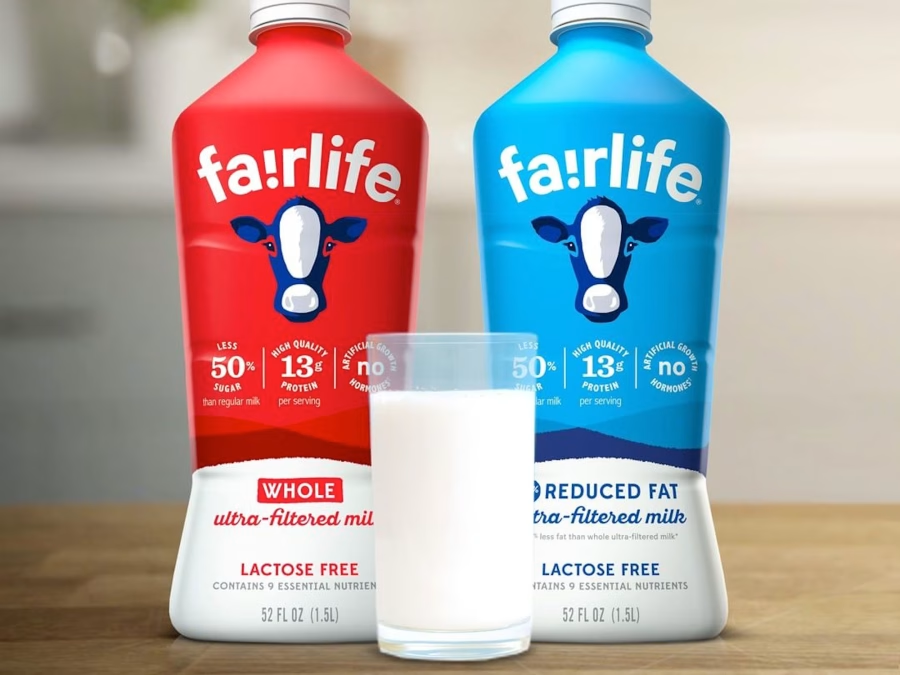Boost colostrum production in your dairy cows with proven nutrition and management strategies. Ready to enhance your herd’s health?
Summary: Have you ever marveled at a newborn calf standing up minutes after birth, brimming with life? That vitality comes from colostrum, the golden elixir packed with essential nutrients and antibodies. But have you wondered why colostrum varies so much from cow to cow? Maintaining an adequate colostrum supply isn’t just a matter of luck. Factors like prepartum nutrition, effective herd management, and timely feeding practices post-calving are crucial. Prepartum nutrition significantly impacts colostrum production, affecting both quantity and quality. Providing sufficient metabolizable energy (ME) in carbs and fat is essential, though increasing starch can drop IgG concentrations and raise insulin levels. Lipids in the diet have varied effects on IgG concentration but don’t significantly affect colostrum yield. Dietary protein with higher metabolizable protein (MP) levels may benefit younger calves, especially those attaining second parity, but controlling these levels is critical to preventing adverse effects on colostrum production.
- Colostrum is critical for newborn calves, providing essential nutrients and antibodies.
- Individual cow factors and effective management practices significantly influence colostrum quality and yield.
- Prepartum nutrition plays a vital role in colostrum production.
- Sufficient metabolizable energy (ME) in prepartum diets is necessary, mainly from carbohydrates and fats.
- Increased dietary starch can reduce IgG concentrations and raise insulin levels.
- Dietary lipids have mixed effects on IgG concentration but generally do not impact colostrum yield.
- Higher metabolizable protein (MP) levels can benefit younger cows, especially second parity, but must be carefully managed to avoid adverse effects.

Have you ever wondered why some calves prosper, and others struggle? The key might be in that first golden meal: colostrum. This nutritional and antibody powerhouse is not just a meal, it’s a crucial step towards a healthy and productive life. As dairy producers, your knowledge and understanding of colostrum production is paramount. Colostrum is not just milk; it’s the primary source of antibodies that protect newborn calves from sickness while providing necessary nutrients for growth and development. Your efforts can make a significant difference in the health and future of these calves. Are you interested in how to increase colostrum output on your farm? The cow’s diet, the environment, and the time of the colostrum collection all play essential roles. So, what can be done to address these challenges? Continue reading to learn how to optimize colostrum production and calves’ health, as this study article published in the Journal of Dairy Science outlines.
Picture This: A Newborn Calf Taking Its First Steps
It requires a restart, which is where colostrum comes in. Colostrum is the first milk produced by a cow after giving birth. Unlike conventional dairy, it contains a specific combination of nutrients and antibodies to give the calf a head start. As dairy producers, you provide this head start, empowering these calves for a robust life.
However, why is early milk so important? Newborn calves do not have a completely developed immune system. They lack natural defenses against illnesses and infections. This is where your role becomes crucial. Colostrum has a high concentration of antibodies, which act as the body’s troops against pathogens. When a calf consumes colostrum, it rapidly absorbs these antibodies, borrowing the mother cow’s immune system until it can create its own—a process known as transferring passive immunity. Your actions directly impact this process, ensuring the health and future of these calves. Your responsibility is not just important; it’s vital. Your efforts can make a significant difference in the health and future of these calves.
In addition to these essential antibodies, colostrum is abundant in proteins, lipids, vitamins, and minerals. These nutrients are necessary for the calf’s growth and development, allowing it to start a robust life.
To put it simply, colostrum is a nutritional supplement for calves. Without it, babies would struggle to remain healthy and develop normally during those critical early days. Providing calves with high-quality golden milk immediately after birth is crucial for dairy farmers.
Ever Wonder Why Some Cows Produce More Colostrum Than Others?
Have you ever wondered why some cows produce more colostrum than others? Let us look at the several parameters that impact colostrum output and quality.
Individual Animal Factors
- Parity: Did you know that multiparous cows often produce colostrum with greater IgG concentrations than first-time calves? According to research, older cows regularly produce more colostrum than younger cows. (Gavin et al., 2018).
- Breed: Another important consideration for your cow. Regardless of the season, Jersey cows often produce higher-quality colostrum. However, they sometimes struggle with continuous supplies, particularly throughout the autumn and winter (Gavin et al., 2018).
- Metabolic Status: Recent research indicates that a cow’s metabolic health significantly impacts colostrum output. Increased prepartum beta-hydroxybutyrate (BHB) and antioxidant capacity are associated with higher colostrum production (Borchardt et al., 2022).
Environmental Influences
- Seasonality: Colostrum yield fluctuates with the seasons. For example, yields in multiparous Jersey cows peak in June and fall dramatically by December. This tendency is consistent across breeds and geographical areas (Gavin et al., 2018; Borchardt et al., 2022).
- Temperature-Humidity Index (THI): This is another game changer. THI measures the combined effects of temperature and humidity on the cow’s comfort. High THI levels, particularly before calving, might degrade colostrum quality. Higher temperatures and humidity levels in late pregnancy may reduce colostrum IgG levels (Gavin et al., 2018; Borchardt et al., 2022).
Understanding these characteristics will allow you to control colostrum production on your farm better. So, are you prepared to improve your colostrum management practices?
Prepartum Nutrition: The Linchpin of Colostrum Production
Prepartum nutrition significantly impacts colostrum production, altering both amount and quality. Let us break this down by looking at dietary calories, protein, minerals, and vitamins:
- Dietary Energy
It is critical to provide sufficient metabolizable energy (ME) in the form of carbs and fat. Although increasing starch concentrations to enhance energy density does not seem to have a substantial effect on colostrum supply, it may drop IgG concentrations while raising insulin levels ([Hare et al. The incorporation of lipids in the diet has varied consequences in terms of IgG concentration. Still, it has no significant effect on colostrum yield or other components (Martinez et al. - Dietary Protein
Protein is another essential component. Feeding cows with varying metabolizable protein (MP) levels might affect colostrum output and IgG levels. Higher MP levels, for example, may benefit younger calves, particularly those attaining second parity (Hare et al. However, controlling MP levels is critical to preventing adverse effects on colostrum production. - Minerals and Vitamins
Minerals and vitamins, particularly calcium and Vitamin D, are essential. Strategies for preventing hypocalcemia, such as changing the dietary cation-anion difference (DCAD), may assist. However, most studies revealed no substantial influence on colostrum output or IgG concentration; the source of vitamin D is essential. Feeding calcidiol (25-hydroxyvitamin D3) rather than cholecalciferol (vitamin D3) increases colostrum output and fat concentrations ([Martinez et al.
Practical Tips for Diet Formulation and Supplementation
- Energy: Prioritize a balanced carbohydrate and fat intake to guarantee enough energy without affecting colostrum quality.
- Protein: Consider the cow’s parity and strive for an appropriate MP level that promotes colostrum production while avoiding excessive consumption.
- Minerals: Adjust DCAD to effectively regulate calcium levels while avoiding unnecessarily decreasing dry matter intake (DMI).
- Vitamins: Calcidiol contains vitamin D, which improves colostrum supply and quality.
Proper nutrition control before parturition may significantly alter colostrum production and quality, benefitting cows and their calves ([Hare et al.
What is the Big Secret to Boosting Colostrum Production? It is All About Management
What is the biggest key to increasing colostrum production? It is all about management. From the prepartum environment to the time of colostrum extraction, let us look at some practical measures that might help your farm.
- Dry Period Length
Are you aware that the duration of a cow’s dry period substantially influences colostrum yield? According to research, cows with longer dry periods, approximately 60 days, produce more colostrum than those with shorter dry periods, 30-40 days. Grusenmeyer et al. found that cows with a 60-day dry period produced more colostrum (2.2 kg and 2.6 kg) than those with shorter dry periods (<45 days) (Westhoff et al., 2023b). - Prepartum Environment
Colostrum production may be influenced by the environment cows are exposed to before calving. High temperatures and humidity may cause heat stress, which reduces colostrum output. In a real-world example, cows that were given cooling (shade, sprinklers, fans) had much higher colostrum quantity and quality. They obtained 7.1 kg of colostrum with greater IgG concentrations than 4.0 kg from heat-stressed cows with no cooling equipment (Sutter et al., 2019). - Time in the Close-Up Pen
The time cows spend in the close-up enclosure is also important. Providing cows adequate time in this confinement allows them to adjust and benefit from a close-up feed to increase colostrum production. Some research, such as those conducted by Amirabadi Farahani et al. (2017), implies that a 21-day close-up duration may provide superior colostrum outcomes than ten days. - Timely Colostrum Harvest
Timing is critical. Colostrum should be obtained within 8 hours after calving to preserve its high IgG content. Silva-Del-Río found that colostrum obtained after 8 hours after calving had decreased IgG concentrations. What is the takeaway? Harvest early to ensure the colostrum is at its optimal quality. - Oxytocin Administration
Can a simple hormone injection increase colostrum production? The administration of 20 IU of oxytocin intramuscularly 3 minutes before stimulating the cow for colostrum extraction enhanced IgG content by 6.3 g/L (Sutter et al., 2019). Although this has little effect on total yield, it may increase the potency of the colostrum.
Based on research and real-world experiences, these techniques emphasize the necessity of attentive, proactive management in increasing colostrum production. Adjusting these elements may give your calves the most fantastic start in life.
So, you have Collected the Colonostrum Within the golden window, and Now It is Time to Ensure Its Quality and Safety.
You have gathered the colostrum inside the golden window; it is time to confirm its quality and safety. Here is what you need to know about postharvest management, including how to check quality and reduce bacterial contamination.
- Guidelines for Assessing Colostrum Quality
Brix refractometers and hydrometers are your go-to instruments for swiftly assessing colostrum quality on a farm. A Brix refractometer gives an indirect estimation of colostral IgG concentrations. Apply a few drops of colostrum to the refractometer and read the percentage (Brix%). A value of ≥22.0% indicates good quality colostrum, with an IgG content of ≥50 g/L (Buczinski & Vandeweerd, 2016). Conversely, a hydrometer may determine IgG content by measuring specific gravity. Both gadgets help ensure that the colostrum you give your calves is of the most excellent quality. - Minimizing Bacterial Contamination
Maintaining sanitation during colostrum collecting and handling is critical. Clean and sterilize any equipment that touches the colostrum, and wash your hands before handling. After collection, chilling colostrum to <4°C may reduce bacterial growth (Cummins et al., 2016). Furthermore, chemical preservatives such as potassium sorbate may prevent microbial development over time. - Heat Treatment Benefits and Methods
Heat treatment at 60°C for 60 minutes successfully lowers bacterial counts without substantially affecting IgG concentrations. This technique is critical for limiting pathogen exposure to calves. Using a water bath will provide equal heating. Monitor the temperature to ensure it does not exceed 60°C since this may damage important immunoglobulins. Though batch heat treatment is successful, single-bag heat treatments provide homogeneous temperature distribution, minimizing hotspots that might contribute to protein denaturation. - Proper Storage Techniques
If you do not plan to use the colostrum immediately, cooling allows for short-term storage of up to two days. For longer-term storage, freezing at -20°C is suggested. Freezing does not significantly affect IgG levels for a few months, but avoiding several freeze-thaw cycles may impair protein quality. To protect the quality of colostrum, thaw it gently in a water bath at no more than 60°C.
Following these guidelines may guarantee that your colostrum is nutritionally solid and safe for your newborn calves, giving them a good start.
Transition Milk: The Unsung Hero of Early Calf Nutrition
Have you heard of transitional milk? It is the milk produced in the days after colostrum, often between milkings 2 and 6. It represents the “middle ground” between nutrient-dense colostrum and regular milk. Feeding transition milk to calves in the first few days after birth may improve their health and development.
Why is it beneficial? Van Soest et al. (2020) and Pyo et al. (2020) found that transition milk may considerably increase preweaning weight growth rates and promote intestinal development. Transition milk is high in nutrients and bioactive components, which help a calf’s growing immune system and digestion. Calves’ gastrointestinal systems are nurtured, preparing them for the adventure ahead.
Challenges Ahead: Implementing a transition milk program has its challenges. Collecting and separating transition milk from the usual stream requires more effort, precise coordination, and additional equipment. The increased workload may seem onerous, especially for farms already experiencing labor shortages. There is also the issue of adequately managing and storing transition milk to ensure it stays a nutritional feed for the calves.
So, how can dairy farmers handle these challenges? Here are a few practical strategies:
- Dedicated Equipment: To avoid contamination and maximize efficiency, gather transition milk using specialist equipment.
- Temperature Control: Quickly chill the transition milk to keep it fresh until it is given to the calves.
- Staff Training: To optimize the advantages of transition milk, ensure that farm workers are taught to handle and feed it appropriately.
- Segmentation: To prevent mix-ups, segment the transition milk collection operation from the usual milking routine.
Peering into the Future: Unlocking Colostrum Management’s Potential
Future colostrum management prospects include exciting potential and critical research requirements. The goal is to understand better and enhance colostrum production.
- Unlocking the Secrets of Colostrogenesis: To significantly improve colostrum supply and quality, we must delve deeper into its physiological underpinnings. Our understanding of how different hormones and nutritional components amass in the mammary gland in the days and weeks leading up to calving remains limited. Baumrucker et al. (2021) and Hare (2023) highlight the importance of understanding these regulatory processes.
- Genetic Selection: Consider being able to breed cows that consistently deliver high-quality colostrum. The prospect of gene selection is authentic and thrilling. Researchers are already looking at the heritability of colostrum properties and the viability of adopting them into breeding programs. Identifying genetic markers linked to higher colostrum production might transform dairy farming.
- Stay Informed: The landscape of colostrum management is constantly evolving, with breakthroughs and ideas arising. Keeping up with new dietary ideas and improved management procedures is critical. Subscribing to relevant publications, attending conferences, and participating in industry seminars may help you stay on top of these developments.
As we proceed, keep in mind that each new piece of knowledge brings us closer to maximizing colostrum production, which will eventually ensure the health and productivity of our dairy herds.
The Bottom Line
Producing and controlling high-quality colostrum is challenging yet critical in dairy production. Individual cow variability, seasonality, good prepartum nutrition, and management tactics are all essential variables that influence colostrum output and quality. Colostrum must be harvested on time, cooled quickly, and stored correctly to preserve its bioactive and nutritious components for calf health. Maximizing its production is critical, given the significant influence of colostrum on calf health and productivity. Are you prepared to increase colostrum output on your farm? It is essential to the survival of your herd!















